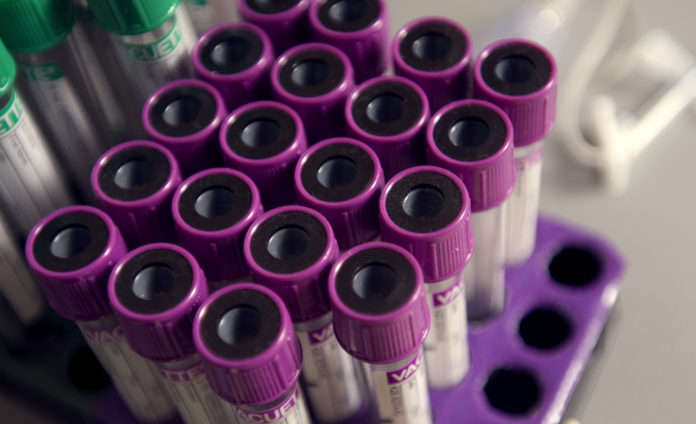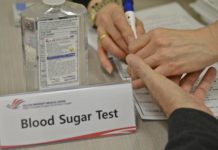
Noninvasive liquid biopsies rapidly and accurately determine response to cancer treatment
Results of two clinical studies showed that blood based liquid biopsies can accurately track lung cancer treatment responses. They measure circulating tumor DNA (ctDNA) during immunotherapy and related treatments.
“There is an unmet clinical need for real-time, noninvasive detection of tumor response to targeted and immune checkpoint blockade treatments,” said Victor Velculescu, M.D., Ph.D., co-director of cancer biology at the Johns Hopkins Kimmel Cancer Center.
“Our studies suggest that tests using blood samples will change the way cancer patients will be treated by helping to evaluate therapeutic responses more quickly and accurately, and avoid unneeded toxicity or ineffective treatments,” he added.
The new studies published in the journal Cancer Research, showed that tracking responses to treatment by measuring ctDNA is a more accurate way of assessing tumor growth or shrinkage than traditional imaging techniques.
EARLY DETECTION OF DISEASE PROGRESSION ON IMMUNOTHERAPY OPENS A WINDOW OF OPPORTUNITY IN WHICH CHANGES IN LIQUID BIOPSIES MAY ALLOW PATIENTS WITH RESISTANCE TO BE RAPIDLY IDENTIFIED
In a study of 28 adult patients with advanced non-small cell lung cancer (NSCLC), blood samples were taken prior to anti-EGFR (epidermal growth factor receptor) or anti-HER2 (human epidermal growth receptor 2) treatments – which target cancer growth – and at intervals thereafter.
All of the patients were treated with osimertinib, mavelertinib, afatinib or erlotinib. Blood samples were analyzed to detect ctDNA shed by tumors into circulating blood. It also worked in tracking tumor burden during therapy by detecting gene mutations as well as chromosomal changes in tumor cells.
16 patients with molecular response to treatment had nearly complete elimination of ctDNA that could be detected in their blood samples within a week. Eight nonresponders to the therapy had limited changes in ctDNA levels and significantly shorter progression-free survival. Overall, patient response to treatment could be detected four weeks earlier and was more accurate than CT imaging.
The early detection of changes using ctDNA preceded responses seen in subsequent scans and allowed mutation changes in the tumors to be tracked.
In a second study of 38 patients with NSCLC, scientists measured ctDNA and immune blood cell changes to determine responses to anti-PD-1 therapy, which boosts the immune response against cancer cells.
Nine patients with a clinical response to immunotherapy had a complete reduction in ctDNA levels shortly after the initiation of therapy. In contrast, 10 nonresponders showed no significant changes or increase in ctDNA levels. Molecular response, as measured by ctDNA levels, more accurately predicted overall survival for these patients. Overall, tumor responses to the therapy that were detected using ctDNA were found nearly nine weeks earlier than with conventional imaging.
Early detection of disease progression on immunotherapy opens a window of opportunity in which changes in liquid biopsies may allow patients with resistance to be rapidly identified. They can then be redirected to receive alternative therapies. Researchers cautions that more testing will be necessary to see if this method works for other types of cancer as well.













